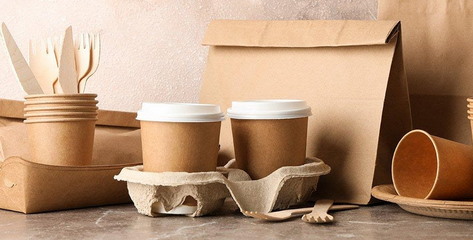What is the Difference Between Eco-friendly and Biodegradable Food Packaging
- Written by NewsCo

Many businesses in the food industry have switched from traditional plastic packaging to new earth-friendly options. When searching for these kinds of products—whether you’re buying food for your restaurant or eating in one—you will often come across words like “eco-friendly” and “biodegradable.” But what do they really mean and do they have a difference?
These questions will be answered in this article, so, if you’re interested to find out, keep on reading. Here, we’ll talk about the proper definition of these words and where they exactly place the products they’re labelled with.
What does each term mean
First, let’s see what each word means.
According to Merriam-Webster, the definition of biodegradable is: capable of being broken down especially into innocuous products by the action of living things (such as microorganisms).
So, as long as a food packaging product will break down over time, it can be considered biodegradable. If you think about it, conventional plastic food packaging is biodegradable — albeit after decades, or centuries even. Given enough time, almost all food packaging products can be subject to biodegradation.
On the other hand, when you search for the meaning of the word eco-friendly, Merriam-Webster gives you a definition that says: not environmentally harmful, or not having a bad effect on the natural world.
While the definition in itself is broad, the term in the food packaging industry refers to a product that was designed to have a small footprint in the environment, either from the manufacturing process or through use. Ideally, eco-friendly food packaging items are those made with very little carbon footprint, like the ones crafted from renewable resources or those made with very little use of heavy machinery.
Now that we’ve understood what they actually mean, let’s look at some of the products belonging to each category.
Biodegradable packaging for food
As we’ve briefly covered above, almost all food packaging products can be considered biodegradable. Now, what those in the food business look at is the time it takes for the food packaging product to biodegrade.
One of the most popular biodegradable food packaging is made from starch-based components. Based on a study, packaging made from cornstarch will break down into carbon dioxide and water within several months — under ideal conditions of course.
So, if you own a restaurant and want to switch to biodegradable food packaging, starch-based products are a good place to start.
Another option is to try those made with sugarcane fibre, which are byproducts from sugar manufacturing factories. They are highly compostable, although you will have to take them to a proper composting facility. Like starch-based products, packaging made from sugarcane should fully decompose after 90 days.
Eco-friendly packaging for food
As we’ve briefly covered above, eco-friendly food packaging should have very little to no carbon footprint, hence many buyers and business owners look into the manufacturing process involved in these food packaging items.
One of the most popular planet-friendly food packaging is kraft paper. It does derive its name from the German word “kraft” which means resistance. That said, kraft paper offers better durability and reliability compared to traditional brown paper which can easily break down, especially when used with greasy food items.
The materials used to make kraft paper are mostly plant-based and require very little processing, kraft paper bags are considered environmentally friendly. Studies show that paper products will completely decompose in a matter of two to six weeks.
Another option for those in the food business is using recycled cardboard paper packaging. The process of recycling these old and used paper products also involves little use of machinery—some none at all—making them appealing to businesses that have eco-friendly aligned policies.
Recycled cardboard papers are typically used as cereal boxes, fast food boxes, frozen food boxes, and in various paper and cardboard packaging applications.
Still confused?
If you’re still confused, a good thing to remember is that eco-friendly food packaging products are made with the aim of reducing carbon footprint from the get-go. That means less use of combustion-powered machinery and other equipment that can cause harm to mother nature. Whereas biodegradable food packaging is more concerned with what happens after the packaging has been used and how long it will stay in the landfill before it completely decomposes.
So, when choosing between biodegradable food packaging and eco-friendly food packaging, make sure to remember that the former is more concerned about what happens after while the latter cares about what takes place during production.
Nevertheless, both food packaging solutions make for better options than traditional plastic ones.



